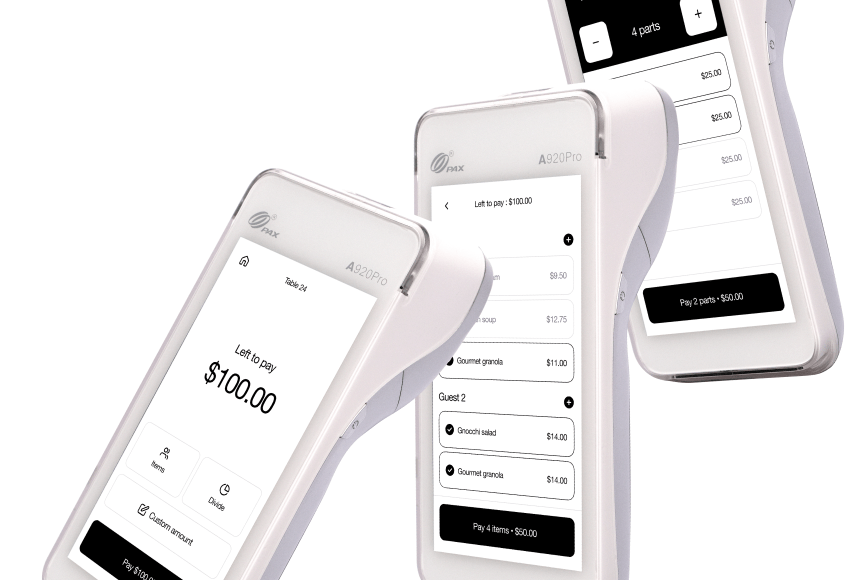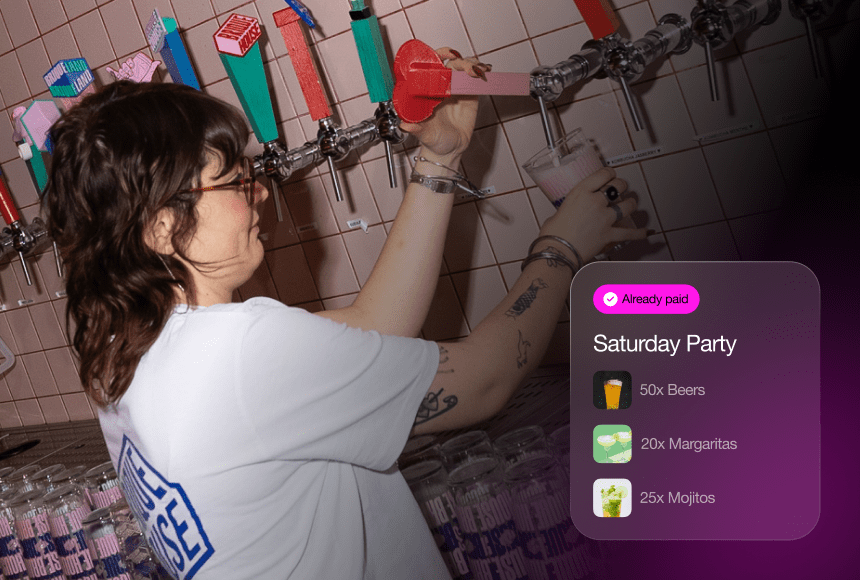
A Practical Guide to Getting the Most Out of Your Restaurant’s Payment Device
Why Modern Payment Terminals Deserve Your Attention
Picture your restaurant on a bustling Saturday night: the kitchen is in high gear, servers are gracefully moving from table to table, and the energy in the dining room is electric. The last thing you want is a snag at checkout—yet that’s precisely where many restaurants stumble. A modern payment terminal can save you from end-of-meal headaches, but only if you’re using it correctly.
Smart devices have evolved beyond simple card-swipe machines. They now offer contactless payment, real-time POS integration, and advanced security features. But with these new capabilities comes the potential for new pitfalls. Missteps could result in slower service, frustrated diners, and even data security risks.
Let’s explore the frequent errors restaurants make when adopting modern payment terminals—and how you can steer clear of them. Avoiding these blunders will keep your team efficient, your guests happy, and your bottom line thriving.
Mistake #1: Underestimating the Importance of Staff Training
One of the most common—and costly—oversights is failing to invest in proper staff training. It’s easy to assume that if servers can handle a smartphone, they can handle a new terminal. But there’s more to it than tapping “Charge.”
Every restaurant has its own workflow. How your device integrates with your POS or handles special requests like splitting checks can differ from place to place. Without a clear understanding of the new interface, staff may freeze at crucial moments or revert to outdated processes, leaving your fancy device underutilized.
- Schedule Hands-On Sessions: Dedicate part of a slow shift or staff meeting to walking through basic and advanced functions. Let employees experiment with real-life scenarios.
- Designate Device “Champions”: Assign a few tech-savvy team members to master every feature. They can coach others and serve as on-shift troubleshooters.
- Role-Play Interactions: Simulate busy situations: how to split a tab for a party of six, what to do if a customer’s card is declined, how to handle contactless payments. Practice builds confidence.
When staff know the system inside and out, you’ll see fewer payment errors, faster turnarounds, and less confusion. Investing in training isn’t just about the device—it’s about boosting the overall guest experience.
Mistake #2: Ignoring Software Updates and Security Patches
Modern payment terminals are a fusion of hardware and software. That software needs regular maintenance to stay current with evolving security protocols, bug fixes, and new features. Overlooking updates is like leaving your kitchen door unlocked overnight—risky and easily preventable.
- Enable Automatic Updates: Many devices and POS systems let you schedule updates during off-peak hours. Automatic downloads ensure you don’t skip essential patches.
- Check for PCI Compliance: Standards from the Payment Card Industry (PCI) help keep sensitive customer data safe. Updates often address newly discovered vulnerabilities.
- Train Staff to Report Issues Early: Encourage servers to speak up if they spot glitchy behavior or slow transactions. Minor issues can escalate if left unresolved.
Paying attention to updates is also vital for your reputation. If guests learn your restaurant uses outdated software, they may worry about fraud or identity theft. Consistent security checks and timely updates reassure them—and help you sleep easier.
Mistake #3: Failing to Leverage Integration with Your POS
Modern payment terminals shine when they connect seamlessly to your existing POS system. Imagine a scenario: a group orders multiple cocktails, a shared appetizer, and separate entrées. When it’s time to pay, your server simply selects the right table on the handheld device, sees the entire order, and processes the payment—no double entry, no guesswork.
Restaurants often buy a slick new terminal only to use it as a standalone device, thus losing out on real-time synergy. This approach leads to re-typing orders, higher chances of error, and longer wait times.
Maximize integration by:
- Confirming Compatibility: Before you invest, ensure your POS and payment terminal can “talk” to each other without glitches.
- Setting Up Unique Menus or Promotions: If the device syncs with your POS, you can easily push nightly specials, discounts, or combos directly to the payment screen.
- Using Data for Analytics: Real-time integration lets you track sales performance and identify top sellers or underperforming dishes in the same dashboard.
When your payment terminal and POS system are on the same wavelength, you reduce manual work, expedite checkouts, and get richer insights into your day-to-day operations.
Mistake #4: Overlooking Contactless and Digital Wallet Options
Contactless payments and digital wallets such as Apple Pay or Google Pay are no longer niche. According to a Pew Research Center study on cashless trends, a growing percentage of consumers say they go cash-free in a typical week. This shift means many diners now expect contactless or smartphone-based payments whenever possible.
If you have a modern terminal but never prompt guests or let them know you offer contactless options, you miss an easy way to enhance their checkout experience. Don’t force customers to rummage for a physical card if they’d rather tap and go.
- Advertise Contactless Capability: Place small signs or mention it in the menu. Let diners see their payment choices at a glance.
- Train Servers to Educate Guests: Sometimes a guest won’t realize the terminal can accept NFC-enabled devices. A quick heads-up can significantly cut transaction time.
- Spot Check Performance: Periodically test contactless transactions. If it’s glitchy or slow, your staff should know to troubleshoot or update software.
Embracing contactless technology shows you’re keeping pace with evolving consumer preferences—and often improves table turnover speed in the process.
Mistake #5: Neglecting Proper Placement and Mobility
Not every restaurant uses a mobile terminal. Some prefer a stationary unit by the register. Others love the agility of a device that staff can carry. Either way, consider how easily diners can reach the device and how quickly your servers can present it.
If you’ve invested in handheld devices but your team is too busy or uncertain to bring them tableside, guests may still have to stand in line. That defeats the purpose of a portable solution. Similarly, if your stationary device is located near the door, you might create traffic jams during the lunch or dinner rush.
Get it right by:
- Analyzing Your Restaurant’s Layout: Position stationary terminals in areas with good foot traffic flow but away from the busiest intersections.
- Making Devices Readily Accessible to Servers: If it’s handheld, have enough devices so staff aren’t constantly hunting for a free one.
- Offering a Discreet Experience: Some diners don’t want to walk across the restaurant to pay. A well-placed or portable terminal can make checkout more comfortable.
Pay attention to your floor plan and service style so you can truly leverage the mobility or convenience factor of your new device.
Mistake #6: Overcomplicating the User Interface
A modern payment terminal can do a lot—split checks, handle loyalty programs, prompt for tips, send digital receipts. While these features are helpful, they can also clutter the screen if not organized properly. You don’t want your servers fumbling through endless menus, or customers feeling unsure about where to tap next.
- Streamline the Layout: Work with your provider to customize the interface. Keep top tasks (like scanning a card or applying a tip) upfront and nest advanced options in submenus.
- Limit On-Screen Prompts: Too many pop-ups can frustrate diners. Prioritize essential info—like totals, tips, and payment confirmation.
- Test Before You Go Live: Run through different payment scenarios to ensure the flow is intuitive. A small tweak now can save massive headaches later.
Striking a balance between robust functionality and a user-friendly interface is key. Remember: you want modern capabilities, but you also want a smooth, error-free transaction every time.
Mistake #7: Overlooking Customer Engagement Opportunities
Your payment device can be more than a debit or credit card portal—it can be a gateway to deeper customer connections. Restaurants often forget to leverage this final moment of the dining experience. A quick, frictionless checkout can open the door to:
- Immediate Reviews: Integrate a prompt that encourages diners to leave feedback right after they pay. If you use a platform like sunday, you can even nudge them to leave a quick Google Review, capitalizing on the fresh dining memories.
- Loyalty Enrollment: Some payment terminals link directly to loyalty or reward programs. Diners can sign up in seconds, increasing the likelihood of a return visit.
- Personalized Offers: With POS integration, you can push targeted promotions—such as a discount on the next brunch or a free dessert on birthdays.
If you only treat the device as a tool for collecting money, you miss these high-impact opportunities to connect with your audience on a personal level.
Mistake #8: Not Having a Backup Plan
Technology is fantastic—until something crashes during your busiest dinner service. If your primary payment terminal fails or your Wi-Fi goes down, how do you handle transactions?
- Invest in a Spare Unit: Especially if you run a high-volume spot. That backup device can save you from major chaos if the main one malfunctions.
- Keep an Offline Workflow: Some systems can store transaction details and sync later when connectivity is restored. Train staff on how to handle offline payments responsibly.
- Plan for Power Outages: Ensure you have battery backups or a generator for crucial equipment. A powerless payment device won’t collect a dime.
Being prepared for the worst can prevent total meltdown. Even if you rarely need your backup plan, it’s better to have it than scramble for solutions mid-crisis.
Where sunday Can Complement Your Modern Terminal
A modern terminal does wonders, but some guests want an even more hands-off approach—especially those who are in a hurry or prefer to keep their payment details in their own phone. sunday allows diners to scan a QR code directly at the table. They can see their entire bill, add a tip, and pay without needing to wait for a physical device.
Implementing sunday alongside your modern terminal can alleviate peak-time pressure, free up your servers, and cater to tech-savvy customers. It also helps capture immediate reviews and feedback, as the platform conveniently prompts diners to share their experience. By offering both device-based and QR-based solutions, you turn payment into a flexible, customer-focused process.
Consistent Monitoring: Your Ongoing Responsibility
Even if you nail your rollout, your responsibilities don’t end there. Keep a pulse on device performance, staff adoption, and guest satisfaction.
- Conduct Regular Audits: Periodically watch your servers use the terminal. Identify any awkward steps or slow responses.
- Collect Feedback: Ask diners if the payment process feels smooth. Their perspective may highlight hidden roadblocks.
- Stay Informed: Follow industry news and technology updates. Modern payment systems advance quickly, and staying current can give you a competitive edge.
Routine check-ins let you continuously refine the process, ensuring you’re getting maximum value from your device.
Putting It All Together
A modern payment terminal can be an incredible asset—or a source of frustration—depending on how you use it. Avoiding common pitfalls ensures you reap its full benefits, from speedier checkouts to stronger customer relationships. Train your team, keep your software updated, leverage real-time POS integration, and stay open to new payment methods like contactless and QR-based solutions.
When everything is aligned, that final step of the dining experience becomes a seamless extension of your restaurant’s hospitality—not an afterthought. The technology fades into the background, allowing you to focus on delighting your guests with delicious food and warm service. And that’s the real magic: making sure the meal’s last impression is just as satisfying as the first bite.
Find out more today
Drop us your details below and we’ll reach out within the next 24h
The payment terminal to make your operation simpler.
Connected to your POS, we offer the only payment terminal specifically designed for restaurants.


